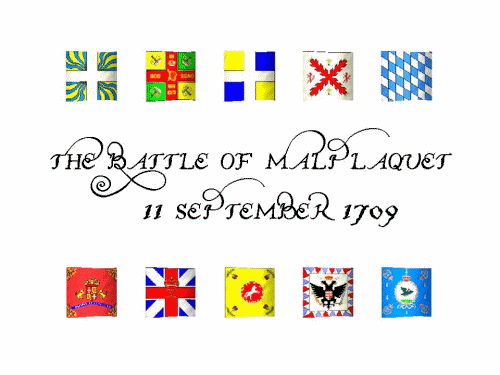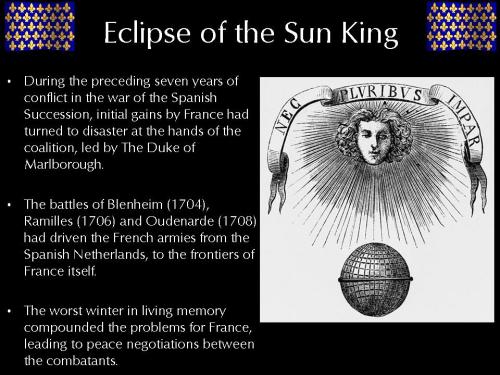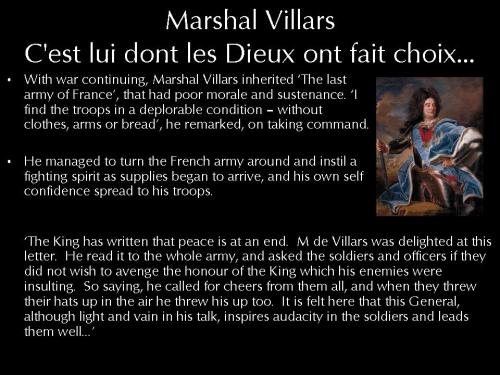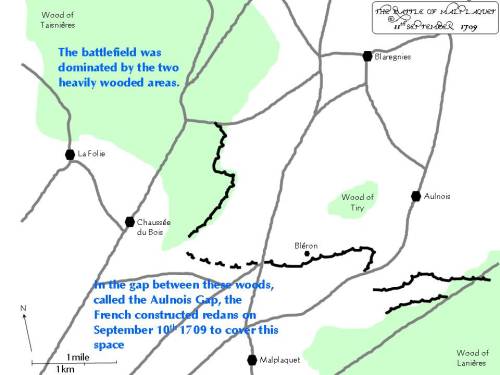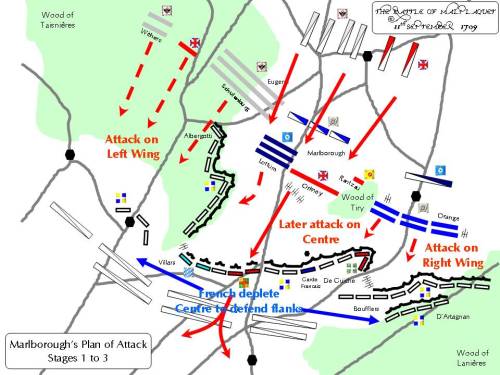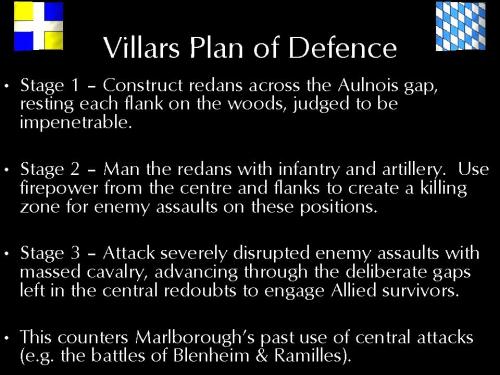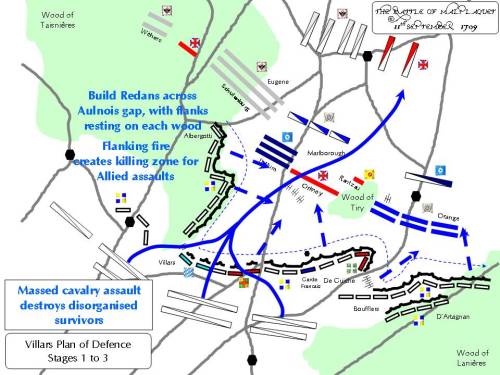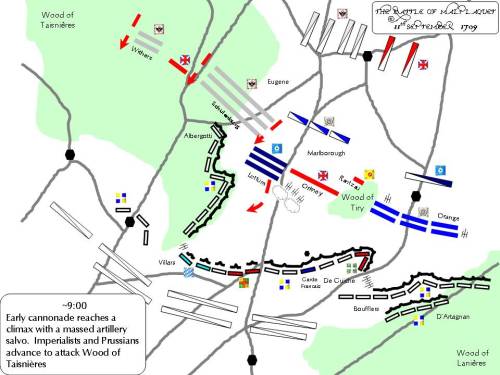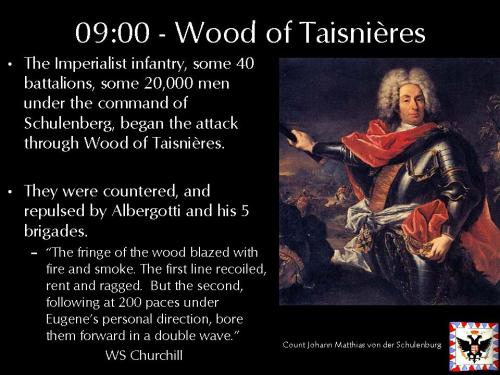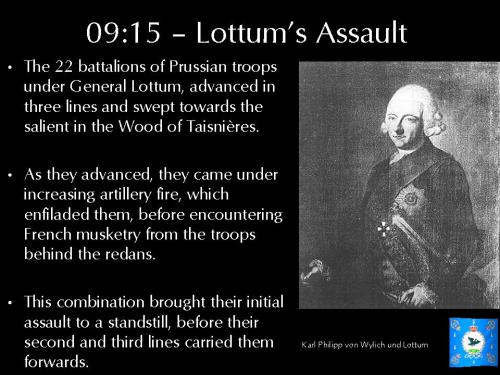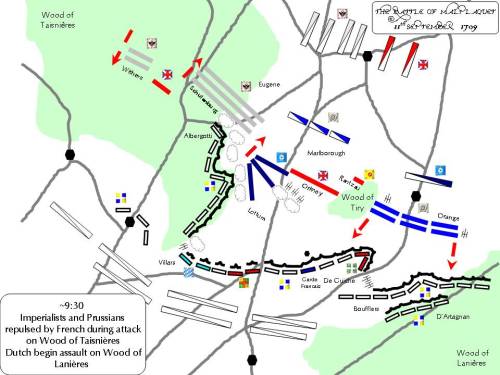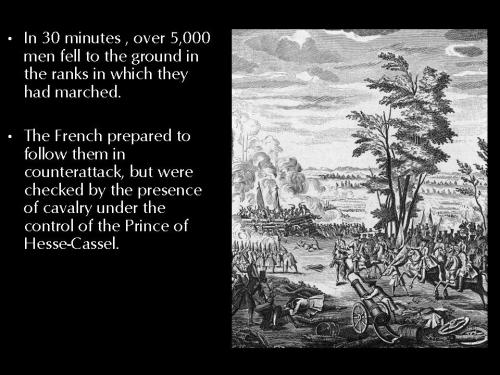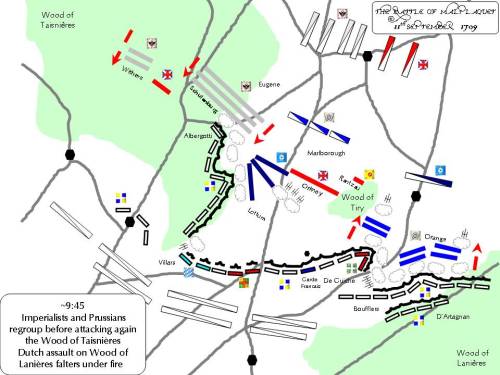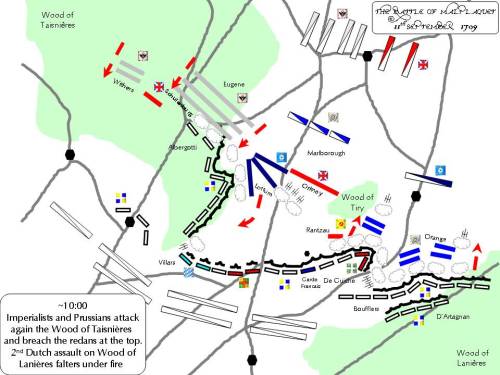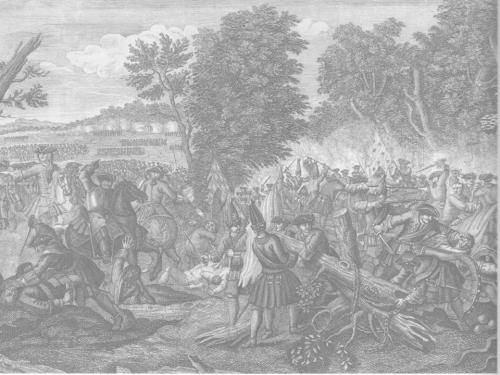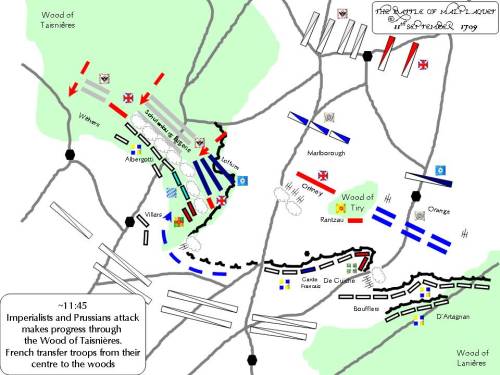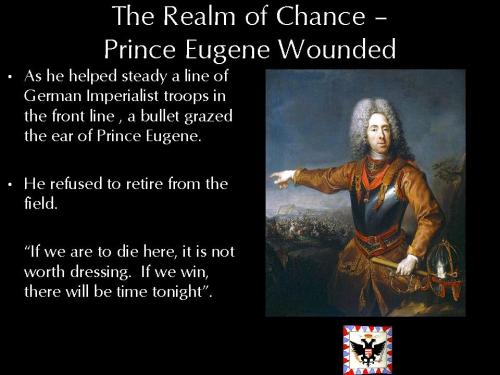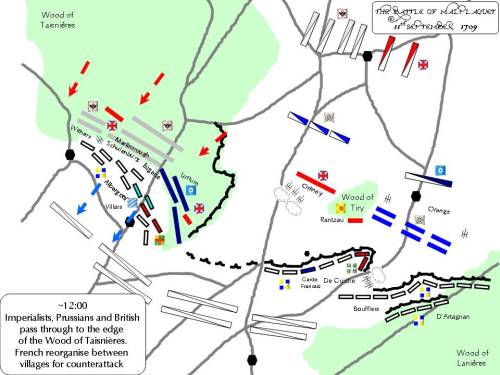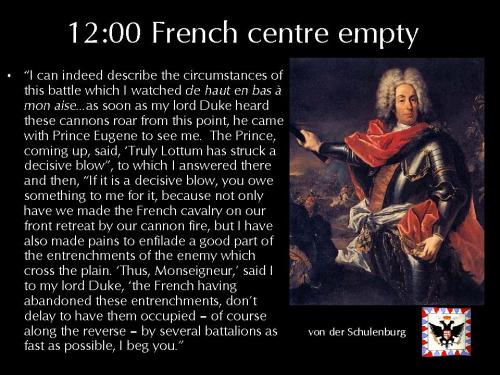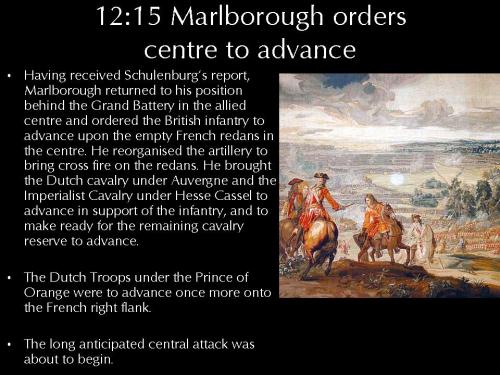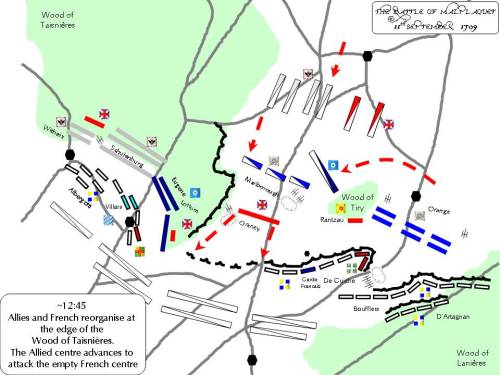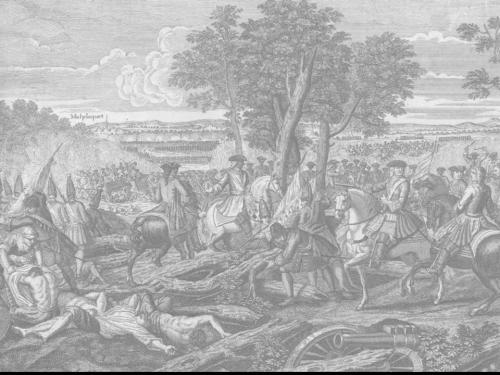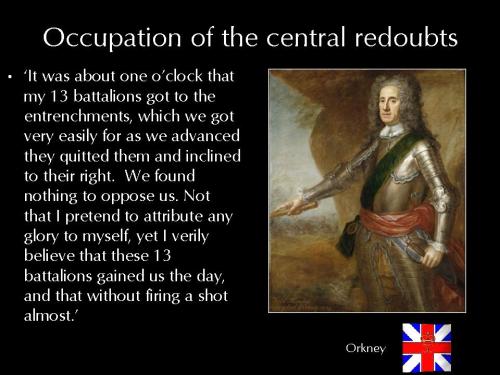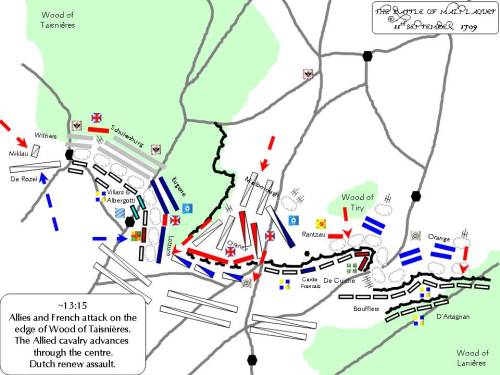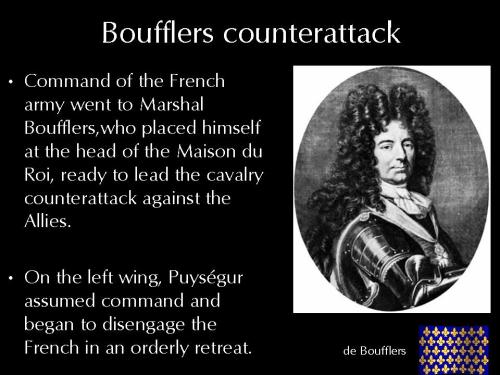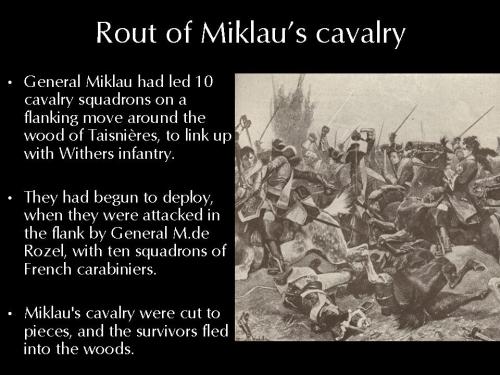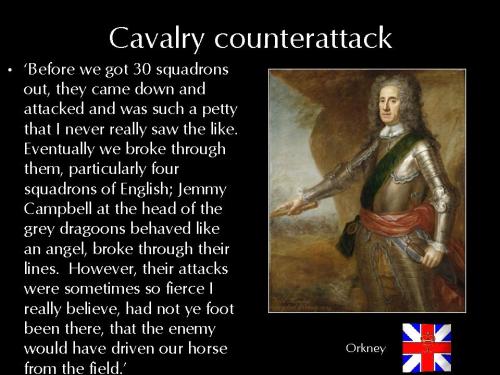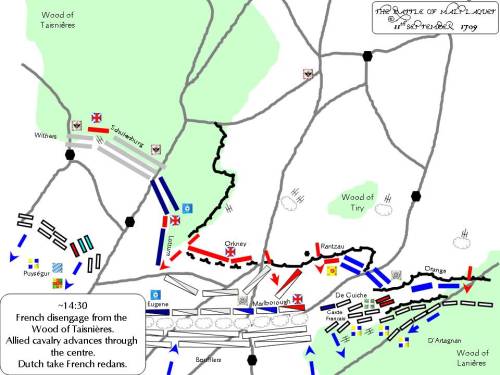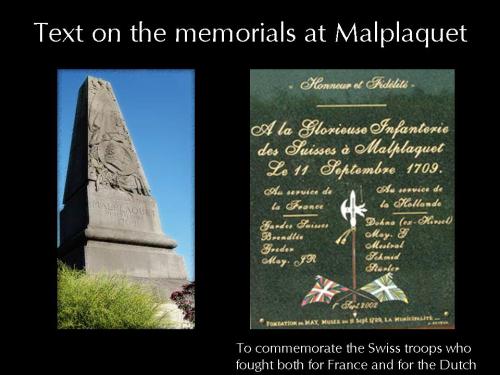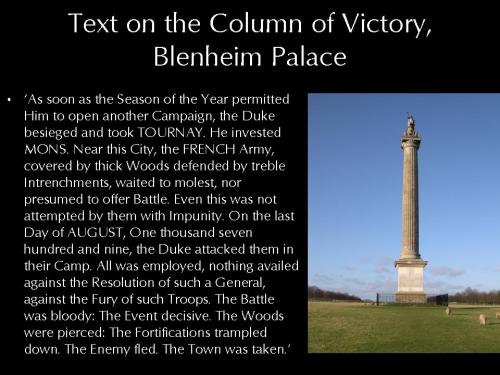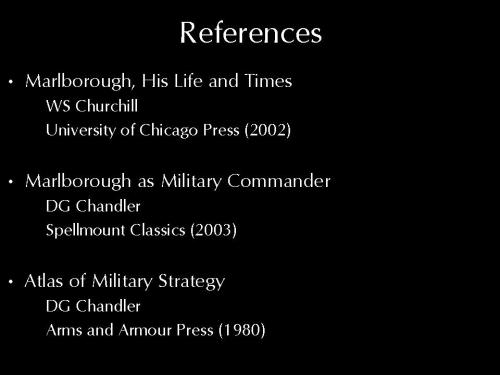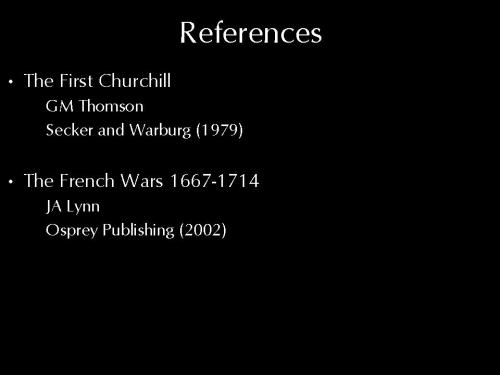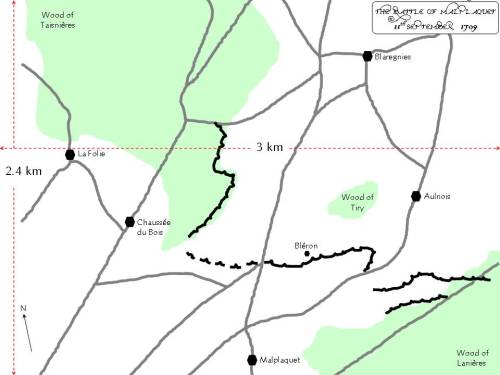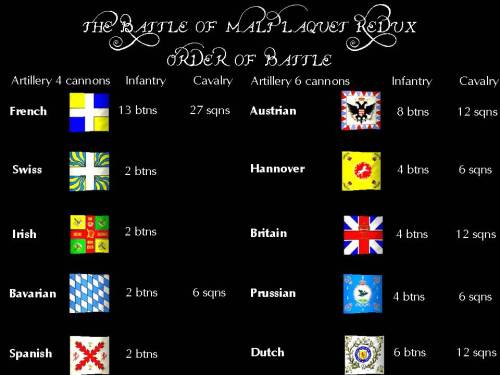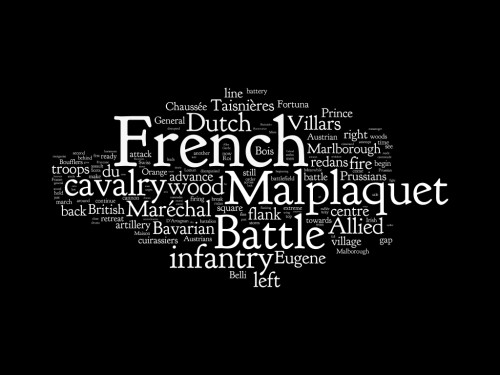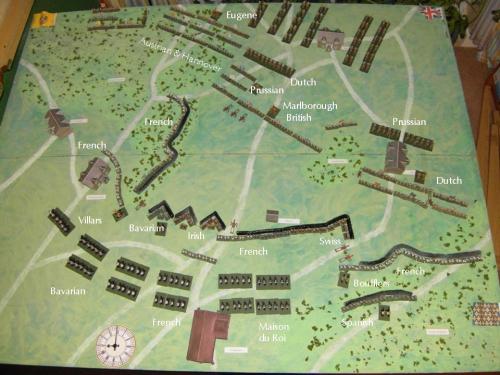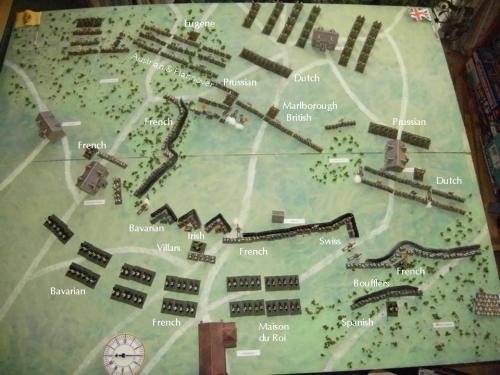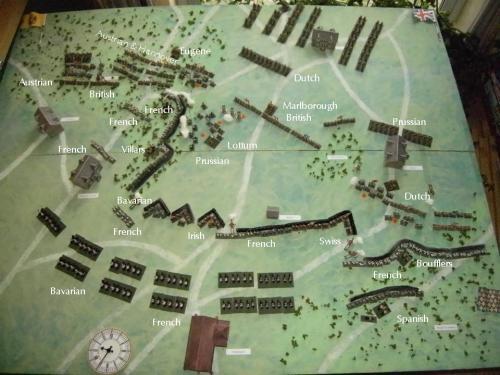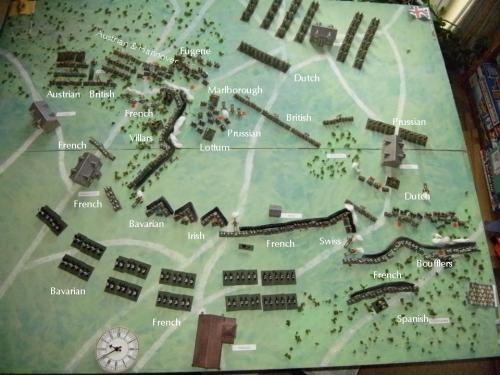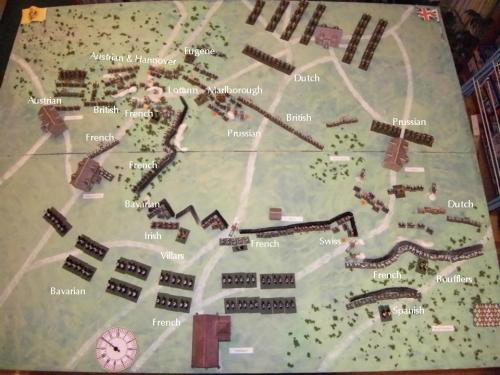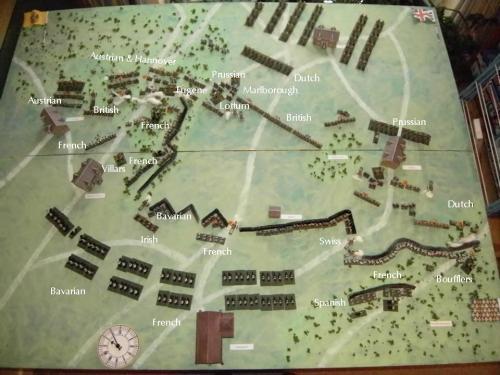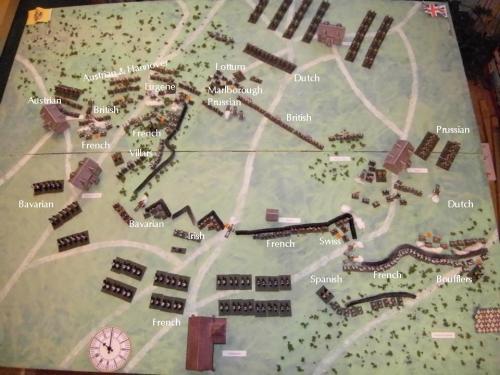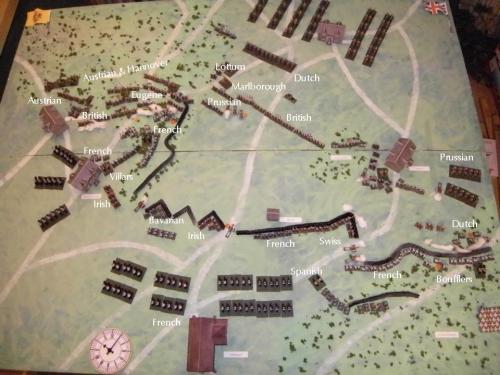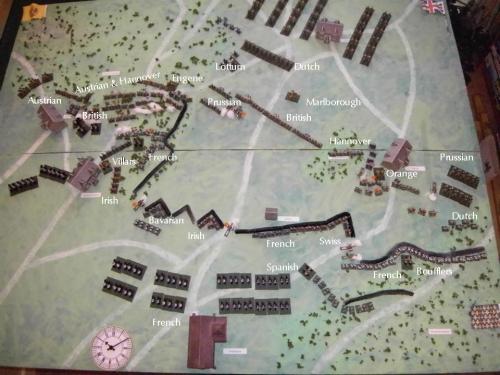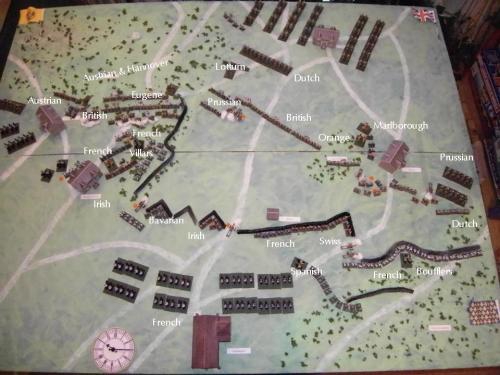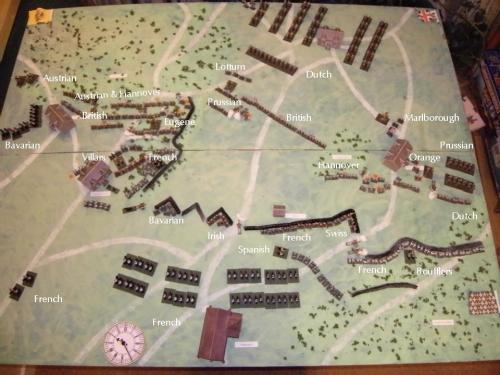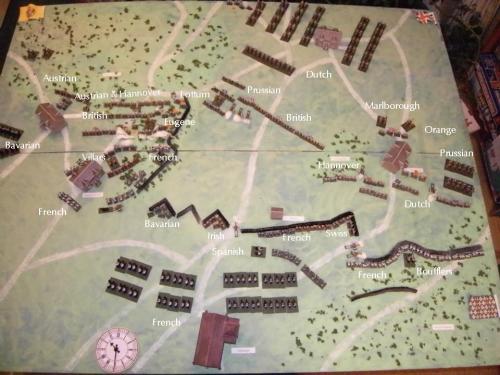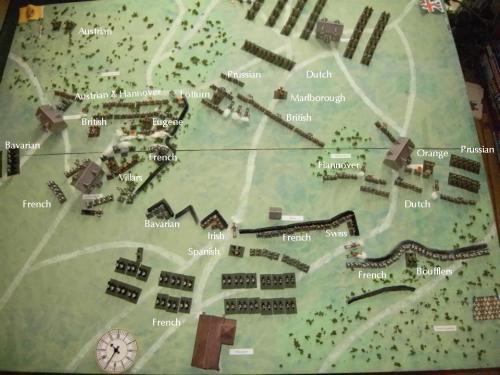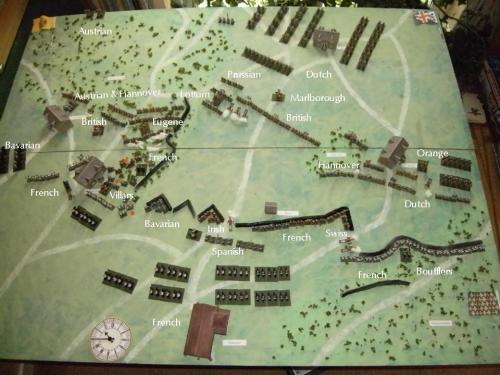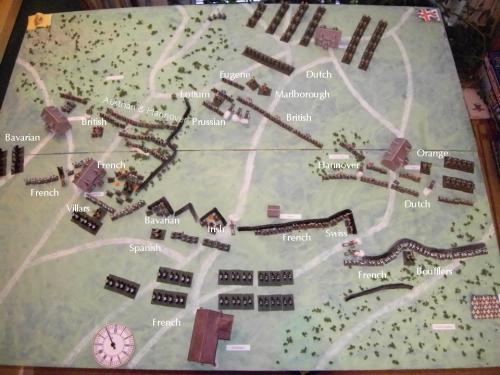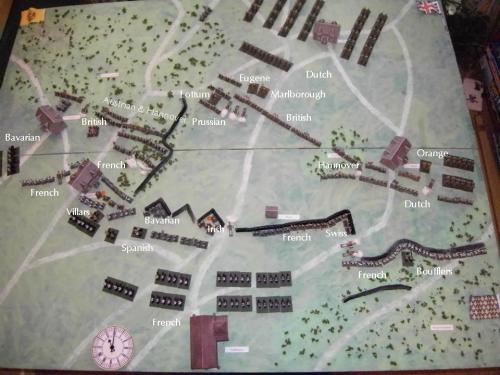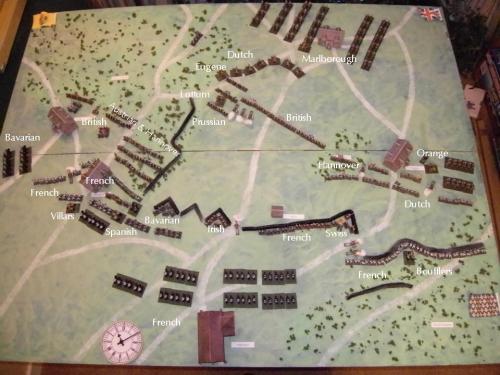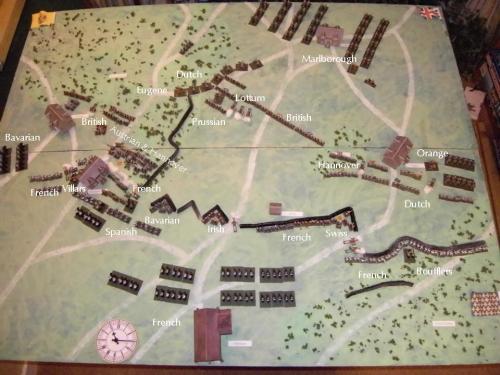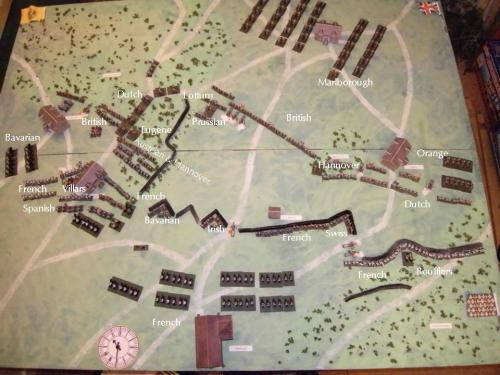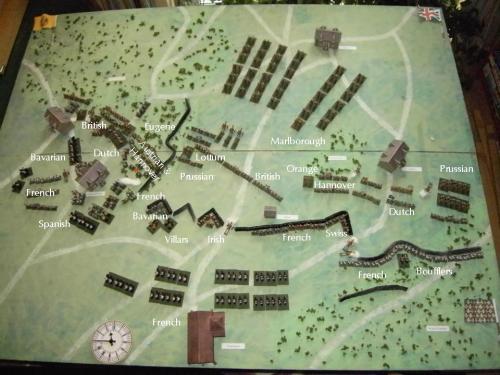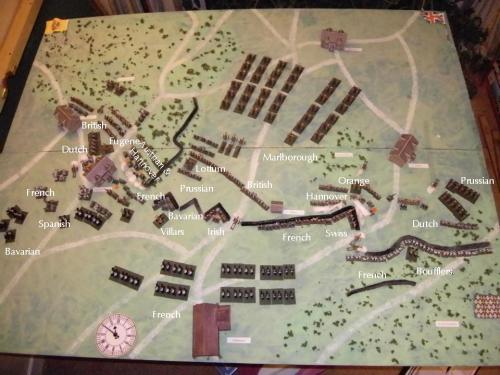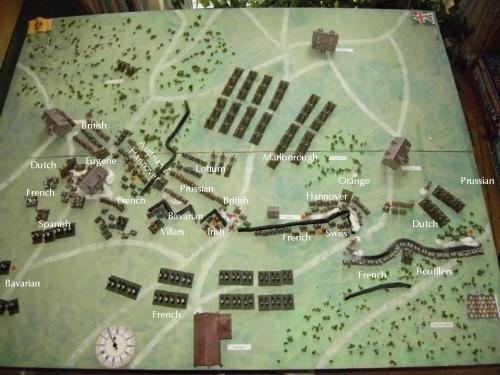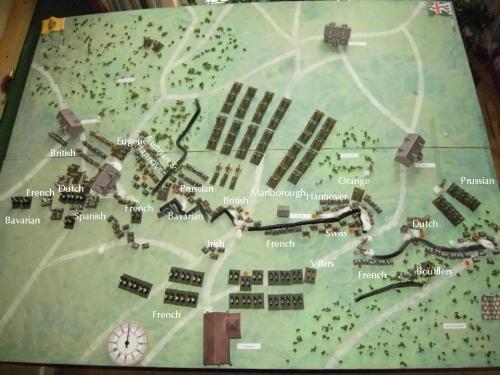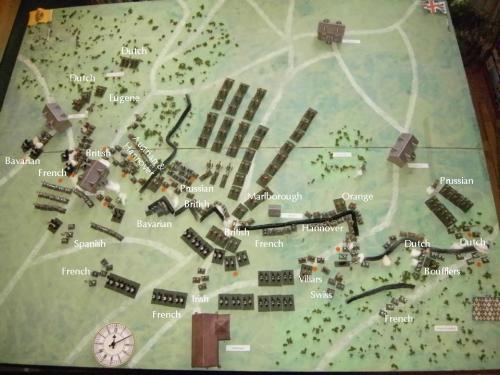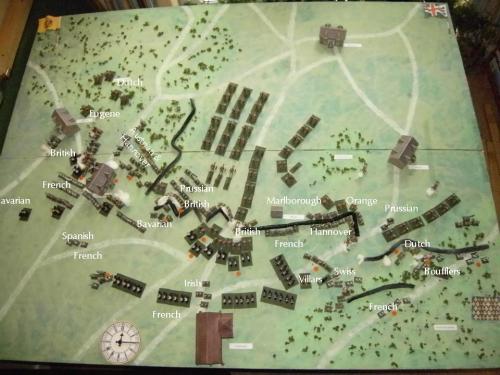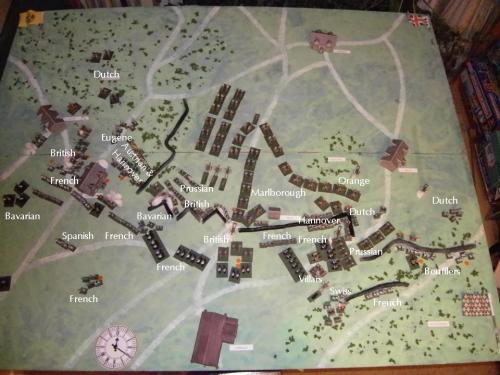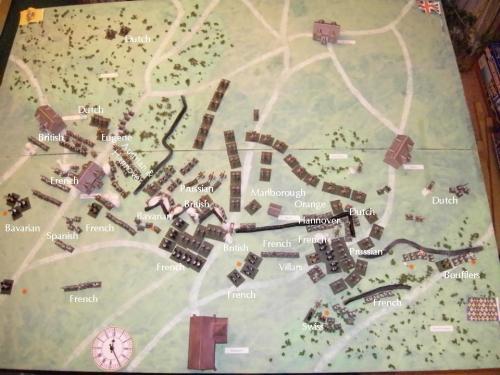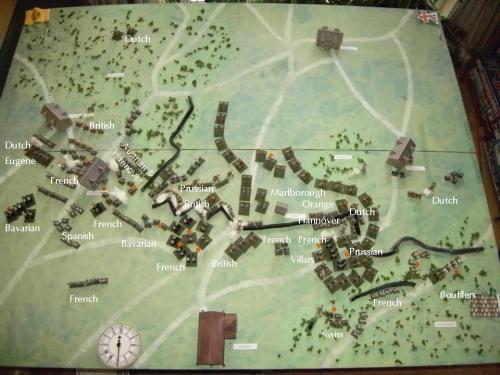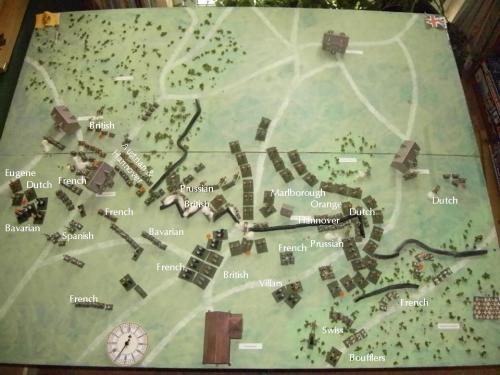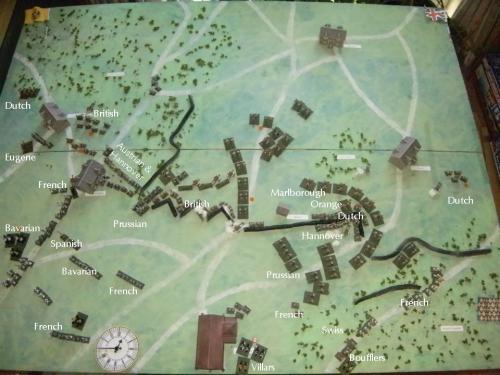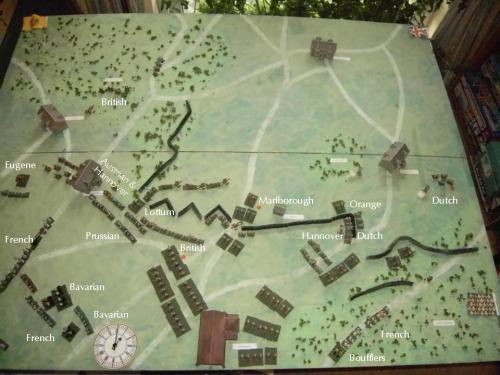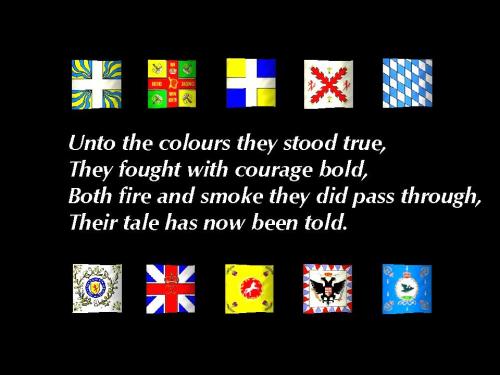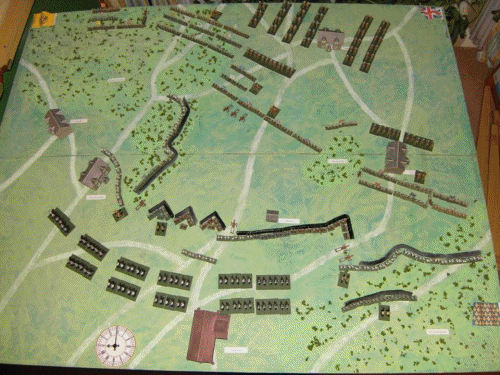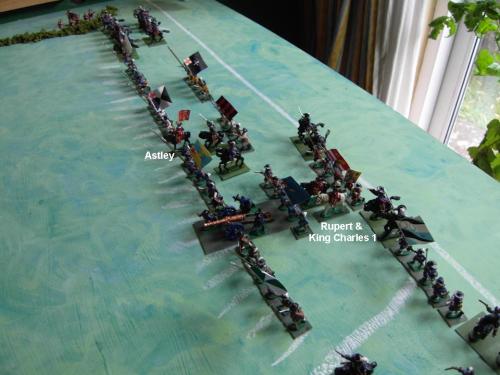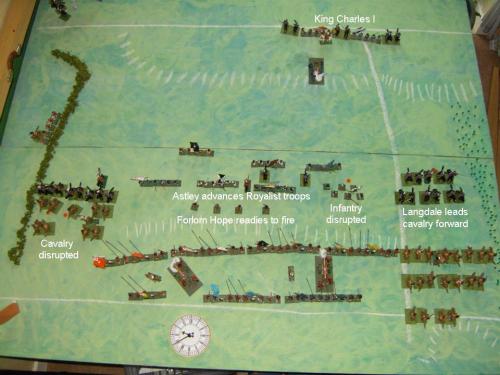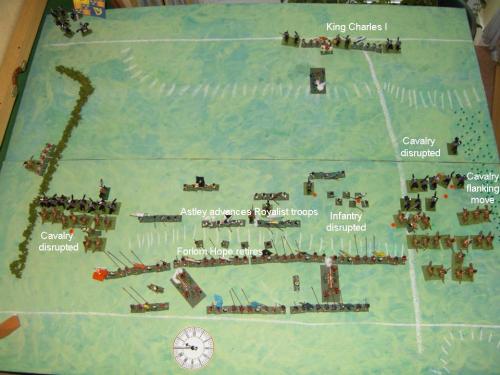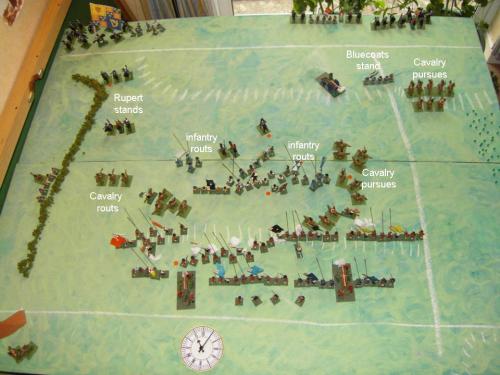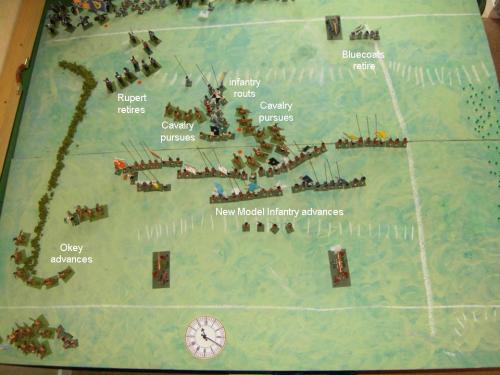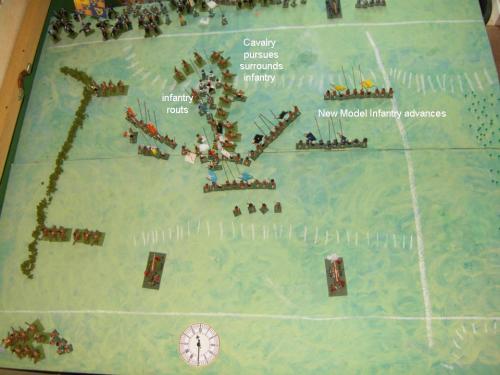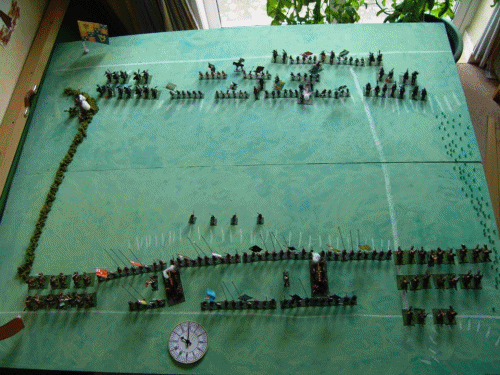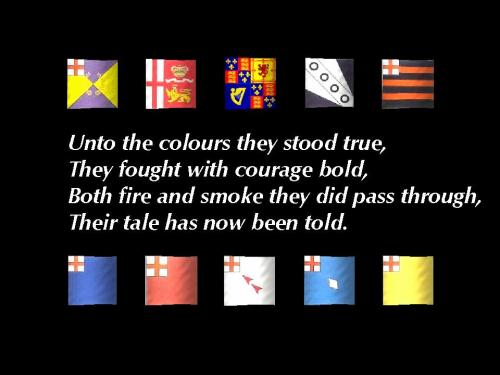 A wargame of the Battle of Höchstädt is described below.
A wargame of the Battle of Höchstädt is described below.
The schematic of the battlefield above has been scaled down to fit our beloved bit of 5′ by 4′ for the wargame recreation. The scale used is board 1mm = battlefield 2 m; each move represents 5 minutes, and each figure represents 50-60 men using 15mm figures. Thus our 5′ by 4′ board rescales to 3 by 2.4 km on the battlefield. The number of troops need to be reduced accordingly to keep the troop density equivalent. The Austrians and Prussians had about 16,000 men at the start of the battle, and the French about 24,000 by the end of 20th September 1703. Reducing this by a factor of 15/24, the following order of battle is given.
In this battle, we use the principle of Sauve qui peut to define the level of losses (in terms of base units of 2 figures) sustained by each side before mass panic sets in. The levels are shown below for each army.
For both sides, once the threshold of losses exceed the following percentages, a dice roll is made to ascertain if mass panic has set in.
For the Imperialst army and their Prussian allies, the loss of up to 15 base units can be withstood before testing for morale. In the case of the Franco-Bavarian army, given the initial deployment of just d’Usson’s troops, a lower level of losses can be sustained, so d’Usson’s troops can lose 6 base units before the 15% threshold is reached. As soon as the main army under Villars and Maximillian II arrives, the morale levels are lifted to 23 base units at the 15% threshold, to reflect the higher level of troops on the field.
A final point:- the little puffs of white cotten wool on the battlefield signify firing and the clouds of white smoke it made, the ‘fog of war’ that black powder produced.
The rules used for the re-enactment are found here.
Move 1 (11:30)
Marquis d’Usson stares at the serried ranks of Austrians and their Doppeladler Fahne before him. He recalls a conversation he once had with le Roy Soleil.
Given the host before him, this theory of stoical forbearance will be tested to the limit, unless the main army under Maréchal Villars and Elector Maximillian II appears soon. Count von Styrum is unaware of the approach of the main French and Bavarian army. All he sees is the small force before him, which must surely yield to his superior numbers. ‘Feuer’. The Austrian cannons begin firing, and the French guns respond. The duel has begun.
Move 3 (11:45)
Marquis d’Usson has ordered le régiment Hainaut into the village of Oberglauheim to protect his left flank. The imperialsts are content for now to rain cannon balls onto the French artillery, thereby disrupting them, so they cannot return fire.
Move 4 (11:50)
Count von Styrum sends the first three lines of his troops foward. It will take time to cross the ground before engaging with the enemy. The French stand and look on at this advance; en muraille blanc, a wall of white coated men armed with muskets, drapeau d’ordonnance flying.
To the rear of the Imperialists, Fürst von Anhalt-Dessau orders his troops into column. They will march round and in due course outflank the French if they hold their ground.
Move 5 (11:55)
Le régiment Hainaut makes its way into the village of Oberglauheim, and Marquis d’Usson relaxes a little. He sees that the Imperialists are keeping their cavalry close to their infantry, and the cavarly on their right flank is making its way past the village of Sonderheim, squadron by squadron.
Move 6 (12:00)
The French cavalry on the left have seen the Austrian cavalry compressed against Sonderheim, and they attack, discharging their pistols before engaging with sword. The first Austrian squadron is disorganised by this sally. Meanwhile the French cavalry attack forces the nearby Austrian infantry into square. On the Austrian right flank, their cavalry begins to advance ahead of their infantry, who steadily advance on.
The head of the Berliner blau caterpiller, formed from the Prussians and their columns of infantry and cavalry begin passing the village of Unterglauheim.
Move 7 (12:05)
The cavalry battle by the village of Sonderheim ebbs towards the French, then back towards the Austrians, as more of the latter arrive to join the fray; “Vorwärts!“. Austrian infantry flee from the French cannonade, as the advance on the French centre temporarily halts. Marquis d’Usson orders le régiment Anjou into column and stirs the cavalry on the right into action, as he prepares his men for a complicated minuet in front of the advancing enemy.
Move 8 (12:10)
Marquis d’Usson orders the French cavalry on the left to wheel round to face the Imperialist Cuirassiers, swinging behind the village of Oberglauheim, which is itself under pressure from Austrian troops, who falter under the defensive fire from le régiment Hainaut. Meanwhile, le régiment Anjou wheel their column towards the gap left by their cavalry.
The rout of the Austrian infantry stops, but hey haven’t yet reformed, so cannot return to the advance, despite the admonishments from Count von Styrum.
The French left looks more shaken as part of their cavalry shatter under the weight of Austrian horsemen, who now outnumber the remaining enemy by 2:1.
Move 9 (12:15)
The battle is poised to tip either way, according to the whims of Fortuna Belli who smiles on neither side yet. On the French right flank, le régiment Hainaut hold onto Oberglauheim, sending das Regiment Holstein – Ploen reeling back from volley upon volley of musket fire. The Austrians disrupt their Swabian comrades in das Regiment Baden Baden. However all does not proceed to French liking, as le régiment Artois breaks under Imperialist fire. On the French right flank, the French cavalry retreat slowly as the Austrians advance. The French cavalry retirement allows the Austrian infantry to reform out of square, to begin the advance again.
Move 10 (12:20)
The Austrian cavalry sweep around behind Oberglauheim, and the French cavalry on their left wheel around to face them.
The gap in the line left by the routing le régiment d’Artois is quickly filled by le régiment Royal and le régiment d’Anjou. The Swabian Imperialists facing them suffer the worst of the fire exchange.
Two other Austrian battalions still retreat through their advancing comrades, sowing disorder and panic amongst them.
Move 11 (12:25)
Near Oberglauheim the Austrian and French cavalry face off in a mêlée, with the first round going to the French. They send their tormentors back in a rout; the second line of Austrian cavalry looking wearily on.
The Swabian Imperialist infantry retreat from the steady musket fire offered by the French line, which holds firm.
The head of the Berliner blau caterpiller, formed from the Prussians and their columns of infantry and cavalry begin passing the village of Weilheim.
Move 12 (12:30)
The battle has been fought for one hour, and Marquis d’Usson still sees no sign of the main French and Bavarian army. He rides to rally le régiment Artois before they cross the river Schwanenbach. In this battle, every man will count.
The French infantry line, a wall of men clad in white, stands firm having repulsed the first wave of the Imperialists.
Near Oberglauheim, the Austrian and French cavalry face off in the next mêlée, with the honours going to the Austrians, who seek revenge for their earlier loss.
Move 13 (12:35)
The French lose the cavalry duel, and L’Marquis d’Usson rides to them to urge them to rally.
By Oberglauheim, das Regiment Baden Durlach aus Schwaben tries to storm the village, but the French will not yield. Instead the Swabians melt before the French fire.
Move 14 (12:40)
L’Marquis d’Usson fails to rally the fleeing French cavalry, who cry ‘Sauve qui peut‘ as they plunge across the river Schwanenbach. A quick glace over the Marquis’s shoulder suggests he is needed urgently elsewhere.
On the French right flank, Austrian cavalry ride in upon the French cavalry and a new mêlée begins. The Imperialist infantry make contact with the French and start a fire fight. The sound of musketry rolls out across the battlefield, punctuated by cries of En Jou! Feu!.
Move 15 (12:45)
On the French left, the Austrian cavalry begin to advance as the Berliner blau caterpiller draws ever nearer to the village of Oberglauheim.
On the French right, the cavalry mêlée continues. A French battery limbers up, ready to withdraw to relative safety and form a new line of resistance. Meanwhile, another Austrian battalion retreats from the fire fight with the French.
Move 16 (12:50)
The cavalry mêlée on the French right continues, with both sets of men slashing at each other, swords drawn; disorder rules as Mars revels in the fight.
The presence of Austrian cavalry so near forces the french battalion at the end of their right into square. Another Imperialist infantry battalion withers before French fire. To the rear of the Austrians, a battery limbers up and begins to make its way to the nearby hill.
So far, the French have performed well, but they risk a cavalry attack from the rear as the Austrian sweep round in pursuit of the barely reformed le régiment Artois. This mortal threat should concentrate the minds of the men struggling to get into order.
Move 17 (12:55)

The sight of a line of Austrian cavalry before le régiment Artois does the trick, and they snap into square; a secure post to the rear of the French. The second line of Austrian infantry is now in retreat, having been broken by the French wall of white, who cling to their ground, though disorganised.
Fortuna Belli has not completely abandoned the Imperialists. On the right, the French cavalry yield first to the Austrians, who are too tired to pursue. Despite the casualties the Imperialists have taken, they may soon envelop the French. Marquis d’Usson scans the horizon for signs of the main French army. They are nowhere to be seen.
Move 18 (13:00)

The battle is finely balanced. The French infanty by Oberglauheim advance, scattering the Swabians before them, even as Count von Styrum exhorts his men on.
Behind them, a ragged line of French infantry struggle to reorder themselves. Scenting the weakness, the Austrian cavalry to their rear ride forwards. One group attack le régiment Artois in square who hold firm, sending riders and their horses to the ground with their musketry; more work for Somnus and Mors this evening. Another group of Austrian cavalry make straight for the ragged line.
Marquis d’Usson rallies the French cavalry on the right, who dutifully follow their leader back to the fray.
By Höchstädt, the other group of fleeing French cavalry no longer cry ‘Sauve qui peut‘, as distance from the battle calms them. They come to rest, and their senses.
Move 19 (13:05)
Le régiment d’Artois continues to hold in square at the back of the French position and they fight off the Austrian cavalry who scatter towards the gap between the villages. Their Prussian comrades ride forward to fill the void they have left. Before Oberglauheim, the second Austrian cavalry group threaten the rear of the French infantry line, who form into square from the threat. At the extreme left of the French line, the square formed by le régiment d’Anjou starts to buckle from a fire fight with the Austrian infantry third line.
Le régiment Hainaut in Oberglauheim stare as the Prussian battalions, which have marched steadtfastly around the battlefield, as they prepare to storm their village.
The Austrian artillery battery on the hill by Sonderheim unlimbers and makes ready to fire.
On the French right, the cavalry mêlée resumes, with no-one blessed by Victoria so far.
Move 20 (13:10)
Fortuna Belli can curse and bless an army in equal measures. The French position on the left buckles; the Prussians eject le régiment Hainaut from Oberglauheim at the same time as the Austrian Cuirassiers slam into le régiment d’Anjou ; Mars delights in the fight. The Austrian third line of infantry closes in for the kill, and surely the French cannot hold for much longer.
However on the horizon, the advance guard of the main Franco-Bavarian army arrives to the rear of the Imperialists. Oblivious to this development, Count von Styrum hears a strange cheer go up from the French ranks; not at all the sound he expected from an army about to be defeated.
Move 21 (13:15)
Chaos reigns as the French cling onto their ragged line, despite being turned on their left flank by the advancing Prussians and attacked by Imperialists in front, being led on by Count von Styrum.
The relocated French battery fires on the Austrian Cuirassiers attacking le régiment d’Anjou and disorganises them. They retire to safer ground and try to reform. Meanwhile le régiment d’Anjou continues running oblivious to the retreat of the attacking cavalry.
On the French right, again their cavalry yield to the attacking Austrians, who pose ready to sweep down on the mass of infantry in squares about to flee. But still the French keep up a strange cheer, as their beleaguered battalions in square see French infantry behind the relieving cavalry marching towards them.
The Austrian regiments that fled from the first attack reached as far as the river Nebel but did not cross. They stare open mouthed at the column of French cavalry and infantry bearing down upon them. The colonel of das regiment Holstein – Ploen sends a messenger to Count von Styrum alerting him to the new danger.
Move 22 (13:20)
Like a compass needle responding to a nearby stronger magnet, the Austrian battery on the hill swings around by 180° and starts firing at the French cavalry advancing to the rear of the Imperialist army. This movement is also seen by Count von Styrum, who receives the message from the regiment Holstein – Ploen with incredulity and denial. “Es kann nicht sein, müssen Sie irren“.
A Swabian regiment, routing from the battlefront reaches the river Nebel and sees the new danger. The men start running along the edge of the river towards Oberglauheim, and away from the French.
On the French right, the infantry in squares hold on, buoyed by the sight of even more comrades marching towards them. And still more march towards the battle.
On the plain before Höchstädt, the recently routed French cavalry emerge from the town to face a line of Prussian cavalry.
Move 23 (13:25)
Finally Count von Styrum dares to turn around and sees for himself the advancing French cavalry to his rear, who now draw close to Unterglauheim. He instinctively rides towards his unintented rear line, formed from the rallied Austrian infantry along the river Nebel.
At the rear of the French line, the Prussian and French cavalry start another mêlée, with weight on numbers telling for the Prussians.
Move 24 (13:30)
A mass of French infantry retreat from the battle towards Höchstädt. On the French right, their cavalry yield once more to the Austrians. However, a combination of two regiments firing sends back a Swabian battalion in retreat.
The Prussian cavalry win their mêlée against the battle weary French, who ride away in a rout. However an unbelievable message has arrived from the Prussian commander, Prince Anhalt-Dessau, ordering their recall.
Meanwhile, the relieving French cavalry sweep past Unterglauheim.
Marquis d’Usson exhorts his men on. They have done wonders in clinging on, if only they could hold on a little longer. Perhaps the day can still end in Gloire for them, if Fortuna Belli smiles on them.
Move 25 (13:35)

The Prussian cavalry now turn about face, and try to forget the size of the prize to their right. They have the French army at their mercy, and yet their commander wants them to return. Warum?
The Imperialist infantry before the French have not swept forwards, having received a messenger from Count von Styrum, urging caution, given the French army appearing before their rear.
The Prussian commander, Fürst von Anhalt-Dessau, can also see the danger. The Austro-Prussians have just a little more time left to crush d’Usson’s French, before turning to face the new threat. He seeks an urgent meeting with Count von Styrum to discuss their options.
Move 26 (13:40)
As the Prussian cavalry obey, they see the French relieving cavalry riding towards the Prussian infantry, and begin to see the sense in the orders they are following.
The French cavalry see before them the fleeing Swabian infantry, who now abandon their weapons and run for lives.
The Austrian cuirassiers have passed between the gap of the Prussian infantry, and the imperialist infantry and attempt to ride around the latter to catch the French cavalry in the flank. The distance however is long, and they sense the French cavalry will reach the fleeing infantry before they can make contact.
The fleeing infantry under Marquis d’Usson’s command have come back to order, and march behind his line in columns.
Count von Styrum receives the request to meet from Fürst von Anhalt-Dessau. Sensing no immediate danger to his rear, he prepares to ride off in search of his comrade
Move 27 (13:45)
The pursuing French cavalry reach the Swabian infantry and begin the dreadful task with sabres drawn. The Austrian cuirassiers pass around the flank of a line of Imperialist infantry, and see this carnage. Revenge spurs them on.
The Austrian infantry before Marquis d’Usson tries one last time to break his line; thick smoke and the sound of musketry ripples up and down. One battalion of Austrians turns and flees, leaving a gap in the line.
Fürst von Anhalt-Dessau has ordered his Prussians to form a new line of battle, with which to sweep the flank of the French. The first Prussian column turns into line.
Move 28 (13:50)
The French cavalry still do their terrible work on the defenceless Swabian infantry; only Mars can bear to look on the scene. The Prussian and Austrian cavalry dig their spurs in to drive their horses faster, so they can catch the French.
The Austrian infantry attack breaks on the wall of the French, and most of them retire or retreat.
Count von Styrum now knows he cannot quickly win this battle; he must turn his force to face the ever-growing threat from the French main army, whose columns appear to stretch over the horizon, and place a rear guard to fend off d’Usson’s men.
To the rear of the Imperialists, Maréchal Villars breasts the hill with his fresh infantry, and is delighted to see that d’Usson’s men still making a fight of it. Versailles shall hear of this.
Move 29 (13:55)
The proximity of the pursuing Prussian and Austrian cavalry force the French to break off their attack on the Swabian infantry.
The Austrian cavalry on the French right pour through the gap in theline left by the retreating infantry battalion, as they see the chance to attack the fleeing men.
Maréchal Villars swings the French infantry column to his right before Unterglauheim.
In the midst of the disorganised imperialist infantry, Count von Styrum and Fürst von Anhalt-Dessau meet to decide on the next phase of the battle.
Move 30 (14:00)
The French cavalry calmly form into line, as the Prussians and Austrians try to reach them. The remainder of the terrified Swabian infantry make for Oberglauheim.
On the French right flank, Marquis d’Usson sees his retreating battalion come to some order and form square to fight off the Austrian cavalry attacking them. White smoke envelops the square and for now he cannot tell if they have survived the onslaught.
With a heavy heart, Count von Styrum orders his infantry to break off the attack on d’Usson’s men and turn around to fight the ever growing French threat. Fürst von Anhalt-Dessau will lead his Prussians on, and clear d’Usson from the field, having time to swing around behind von Styrum’s men, to form a masse de decision for later in the day.
Move 31 (14:05)
The French cavalry ride back towards their own infantry deploying under the command of Maréchal Villars. Their pursuers will not reach them.
On the French right flank, le régiment Tourraine fights off the Austrian cavalry who retire in disorder. Marquis d’Usson appaulds his men and their resolve. Having seen off the Imperialists, now he must turn his men and face the Prussians.
Count von Styrum tries to calm two battalions of men fleeing from contact with d’Usson’s men. Every man will be needed in the next fight.
Move 32 (14:10)
Minerva watches with satisfaction and Mars with frustration as mayhem gives way to manoeuvre. The dispositions chosen by the generals now will determine the battles fate.
The Imperialists draw back to form a line of battle along the river Nebel. Before them, the growing Franco-Bavarian army also deploy into line of battle.
The successful French cavalry raid rides back to join thier newly arrived camarades who have just breasted the hill before Oberglauheim.
Fürst von Anhalt-Dessau welcomes back his cavalry after their fruitless chase of the French. They will be a trump card to play when attacking d’Usson’s men.
Marquis d’Usson begins issuing the orders to swing his men, forming a right angle into a new line to face the men in Berliner blau.
Move 33 (14:15)
The manoeuvres continue uninterrupted, apart from artillery fire raining cannon balls down on the marching men.
Fürst von Anhalt-Dessau watches his infantry march in columns, shortly to form a new line. Minerva whispers in his ear and he sees the empty space by the left flank of d’Usson’s line, now forming a curve. His men on the right flank have no-one to fight.
d’Usson knows this too; he must extend his left, or risk being flanked. His men are in front of the river Schwanenbach; they would be better behind it to face the Prussian wave when it comes.
Move 34 (14:20)
Marquis d’Usson rides as fast as he can to his right flank, ordering a rapid redeployment of men to his left flank. But a commander knows that no matter how urgent the need, it still takes time.
Before d’Usson’s men, Fürst von Anhalt-Dessau urges his infantry on in their redeployment to a line of battle. The race is on between the French and the Prussians in reforming before the next round of combat.
Move 35 (14:25)
All is movement. The Prussians near finishing their redeployment, d’Ussons’s French have only started theirs.
Maréchal Villars watches his first line of infantry intently. Should he attack immediately, or wait until the next column of men marching steadily along the road towards the battlefield deploy and form a second line?
Count von Styrum urges the Imperialists towards the river Nebel to form a second line of defence. All he can do is endure the next French attack and hope the Prussians can finish off the French to his rear.
Move 36 (14:30)
The Prussians finish their deployment, as do Maréchal Villars first line of French infantry.
The Imperialists strive to close the gap between their first and second line, as they see the second column of French infantry breast the hill before them. “So many?” says Count von Styrum, but only to himself.
Move 37 (14:35)
The Prussians and French begin a deadly Sarabande; the Prussians advance and the French retire behind the river Schwanenbach, ready to receive the next advance. Behind their line, the two French battalions march as fast as they can to cover the gap emerging on the left flank.
Maréchal Villars waits for the second line of French infantry to begin to form, and Count von Styrum is grateful there is no immediate attack. His second line will be in place before the French come on.
Move 38 (14:40)

The Prussians advance, the French retire, traiding space for time. Fürst von Anhalt-Dessau tires of the Sarabande; time to up the tempo to a Gavotte. He orders his cavalry to head for the wings of his line and wait for any weakness in the French.
Move 39 (14:45)
And so the deadly Gavotte begins, as a line of fire breaks out across the Prussians.
“Machet Euch fertig! Schlaget an! Feuer!”
And the French, who reply
“Présentez armes! En joue! Feu!”
The French initially fare worse. The Prussian cavalry trot forwards looking intently for a French retreat they can pounce on, hawk on mouse.
Move 40 (14:50)
Fortuna Belli frowns on the Prussians, as the battalion on their right retreat. The Prussian cavalry by them move forward.
Behind the French firing line, le régiment Royal Roussilon and its companion near the end of their forced march in column. But they see les Prusses wheel towards them, en muraille.
Far away from this action, les Bavarois arrive and march in column. Maximilian II, Elector of Bavaria, rides up to Maréchal Villars on the hill to discuss how best to deploy his men.
Move 41 (14:55)
The Prussian infantry begin to advance in the firefight. The Prussian cavalry charge the French left wing, with the end battalion in a disrupted square, which withstands the first assault. Along the firing line, d’Usson’s men still mostly hold, en muraille blanc, although increasingly ragged.
On the hill, Maréchal Villars sees d’Usson’s men still stand. His troops have almost deployed in the second line, so he suggests that Maximilian II leads les Bavarois in a flanking march towards Oberglauheim.
Move 42 (15:00)
d’Usson’s men begin to retire from the Prussian advance, as the Marquis tries to rally le régiment Artois. The Prussian cavalry become disorganised as they try to break the French square, who holds on.
“Avant!” The bugles call out, the drums beat and the first line of Maréchal Villars infantry march towards les autres chiens.
Move 43 (15:05)
Firing erupts as the French and Austrians exchange fire, with the French getting the worst. Fortuna Belli frowns on le régiment La Reine, their blood turns to ice and they run.
The French cavalry takes the onset of firing as their cue, and begin to sweep around past the village of Weilheim.
Marquis d’Usson stays with his men as they continue to fall back, leaving two battalions in square dangerously exposed to Prussian ire. They hold firm, and send the Prussian cavalry back in disarray. Fürst von Anhalt-Dessau steadies the battalions by him.
Move 44 (15:10)
Count von Styrum has cause for celebration, as only le régiment Le Rois remains from the French first line. The rest have retired into Unterglauheim and the mill.
Maréchal Villars masks his displeasure with the performance of his infantry, hoping that le régiment Champagne at the far right of the line will do well. He and Maximilian II urge les Bavarois on. The sooner the flanking move takes place, the better.
Marquis d’Usson watches the squares of le régiments Hainaut et Orleans send the Prussians back, with a little help from the French battery nearby.
Move 45 (15:15)
The Austrian battalion at the left of the line looks on at the cavalry mêlée, and decides to form square. “Formiert das Karree! Das ist ein Behfehl”. The men obey as quickly as they can.
Despite holding their own in the first attack from the French, Count von Styrum and his men grow increasingly restless. They can see the French cavalry ride around and attack their own before the village of Oberglauheim. If the Austrians do not hold, their flank will be exposed, as surely as the unfolding infantry attack from die Bayern will bring. And to their rear, a strange roar goes up. Die Französisch have beaten die Preußen!! “Mein Gott, wir sind umgeben”.
Move 46 (15:20)
Fortuna Belli frowns on the Austrian cavalry and the French cavalry muraille sweeps all before them. That’s enough for Count von Styrum’s men, they have endured enough, and the first line falls swiftly into disarray brought on by panic.
This echoes onwards to the Prussians, and they too sense the dangers and fall back to the village of Lutzingen.
Maréchal Villars sees this, but how to exploit it? His troops in Weilheim spring out and force the Austrians back. Time for the second line to advance.
Move 47 (15:25)
The French sweep on and the Austrians fall back. That’s enough for the Austrian artillery on the hill, who limber up and begin to make their way across the plain.
Mars calls to the French cavalry on the right, and their commander leads them forwards by le régiment Champagne. A cavalry officers dream; an army falling back in disarry. “Ziehen Säbel”!
Marquis d’Usson forms his men into another line who have been fighting for four hours continuously. Such a long day.
Move 48 (15:30)
A full mêlée rages by he village of Oberglauheim as the Austrians and Prussians try to stem the advance of the French cavalry.
Count von Styrums men fall steadily back and it looks as if the battle is lost; Mars rides with the French cavalry on the right as they bear down on them, sabres drawn. The Austrians have reformed into columns for quicker movement.
Fürst von Anhalt-Dessau rallies the battalions by him as they reform into a shaken line, ready to hold the gap between Oberglauheim and Lutzingen.
d’Usson’s men advance again. They could cut off the Austrian retreat.
Move 49 (15:35)
The Austrian cavalry send the French cavalry back on the left flank in disarray. If the austrians can repeat this on the right flank, they may yet escape the battlefield in good order.
Move 50 (15:40)
What though the field be lost?
All is not lost; the unconquerable Will,
And study of revenge, immortal hate,
And courage never to submit or yield.
Count von Styrum sees his cavalry on the right rout after a brief mêlée with the victorious French. He must save as many men as he can before d’Usson’s men close in. The Prussians try to come to order, but they too have wilted before Fortuna Belli‘s implacable gaze.
“Jeder für sich und Gott mit alle”!
The battle is lost for the Imperialists.
Move 51 (15:45)
The French cavalry chase the fleeing Austrian infantry into the rough marshland by the Danube, who throw their equipment away, to help them run even quicker. These men are happy enough to still be alive – what need have they of standards and muskets? The Austrian cavalry flees behind the ragged mass of their infantry, as all desperately try to make the gap left open by the Prussians and the Imperialist cavalry by Oberglauheim.
d’Usson’s men advance. The gap the Imperialists have open to them to retreat is reducing minute by minute. Count von Styrum knows this and rides headlong towards escape, abandoning the troops behind him.
Move 52 (15:50)
The French cavalry ride into the fleeing Austrian infantry, leaving more work for Somnus and Mors in their wake, as men, cannons and standards fall to their sabres. To their right, the French infantry under Maréchal Villars march forward, scattering an Austrian artillery train. All the Imperialist guns are now in French hands.
d’Usson’s men halt their advance to form square as fleeing Austrian cavalry ride by, but the gap for retreat is still closing.
Move 53 (15:55)
As more Austrians fall to French sabres, the Bavarian troops have steadily been marching round and will soon be able to attack Oberglauheim, the lynchpin in the gate still open for the Imperialists and Prussians to escape through.
Maximilian II urges the French cavalry on, which line the northern edge of the battlefield, as they face off against the Prussian and Austrian cavalry. Despite being allies, he cannot get the men to advance. Prussian infantry march as fast as they can to form the rearguard on the retreat to Nordlingen.
Still the net closes, bringing in more Austrian soldiers, who throw their hands up in surrender.
Move 54 (16:00)
The net closes in further, and more Imperialists fall into it. They simply beg for mercy and no longer fight.
Move 55 (16:05)
The Bavarians reach Oberglauheim, and the Austrians quit without a fight to join the retreating throng. d’Usson’s men open fire on the remainder still running through the gap, as the French cavalry in pursuit at the rear round up the Imperialist stragglers. The net has closed.
Move 56 (16:10)
Today has been a disaster or a triumph, depending on the point of view of the combatants. Fortuna Belli takes no sides.
Victoria awards the day and the triumph to the French and Bavarians, as she surveys their terrible handiwork. Over 60% of the Austro-Prussian army have become casualties, all their artillery train, and a swathe of their standards are now in French hands.
“d’Usson and his men accomplished miracles today, your Majesty, as did the rest of your army”, Maréchal Villars shall tell Le Roi Soleil in tonight’s dispatch.
Le Roi Soleil shall light a candle in Sainte-Chapelle once he gets the news, and order the singing of Te Deums. Perhaps he shall call Maréchal Villars “Le Tapissier de Notre-Dame. Il est surnommé le tapissier de Notre-Dame en raison du grand nombre de drapeaux ennemis, qu’il prend sur les champs de bataille et que l’on suspend dans le cœur de la cathédrale.”
The entire battle sequence is available as an animated gif, best viewed in Windows picture viewer.
The Generals fighting this battle were






























































































































































































